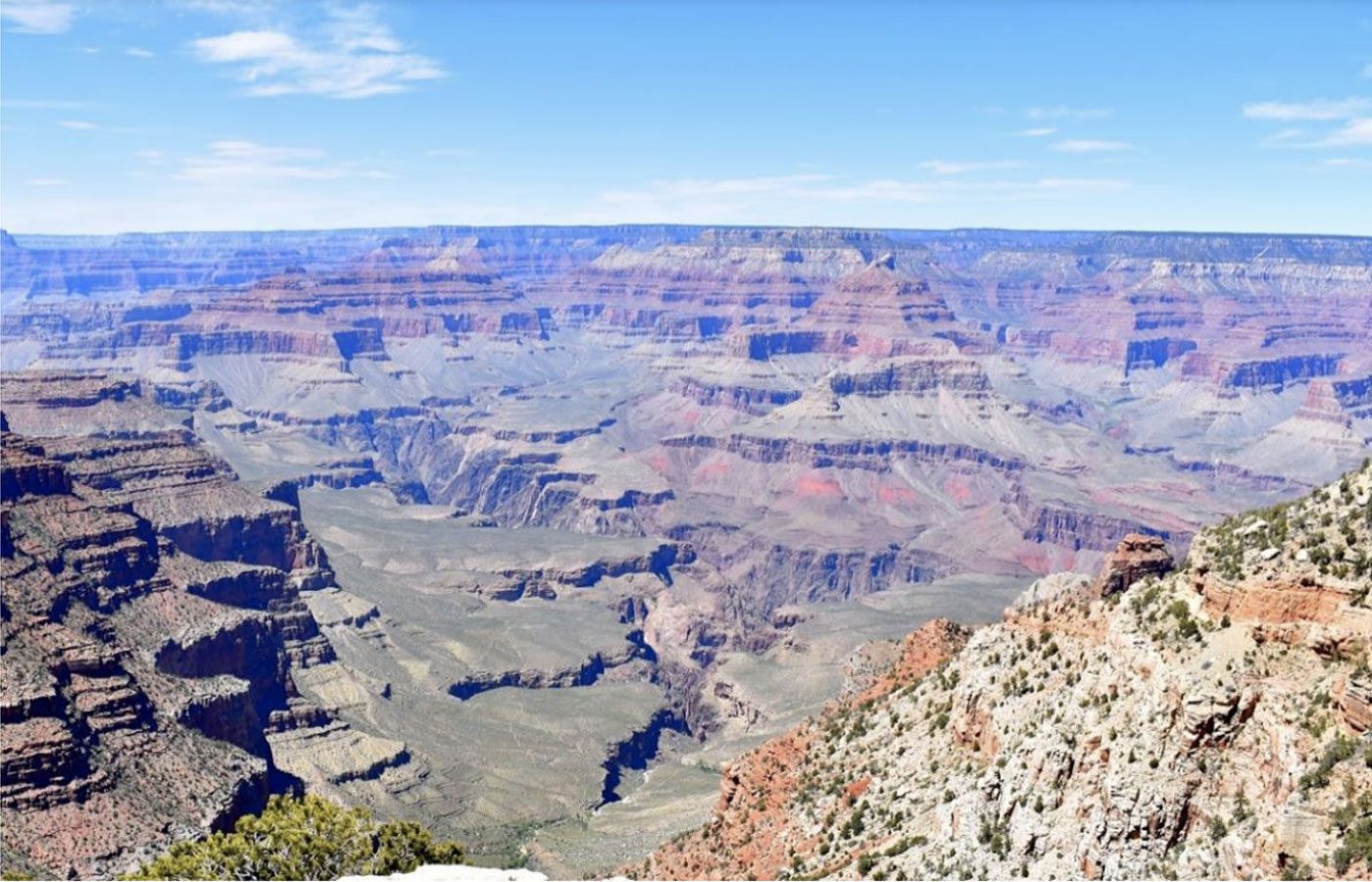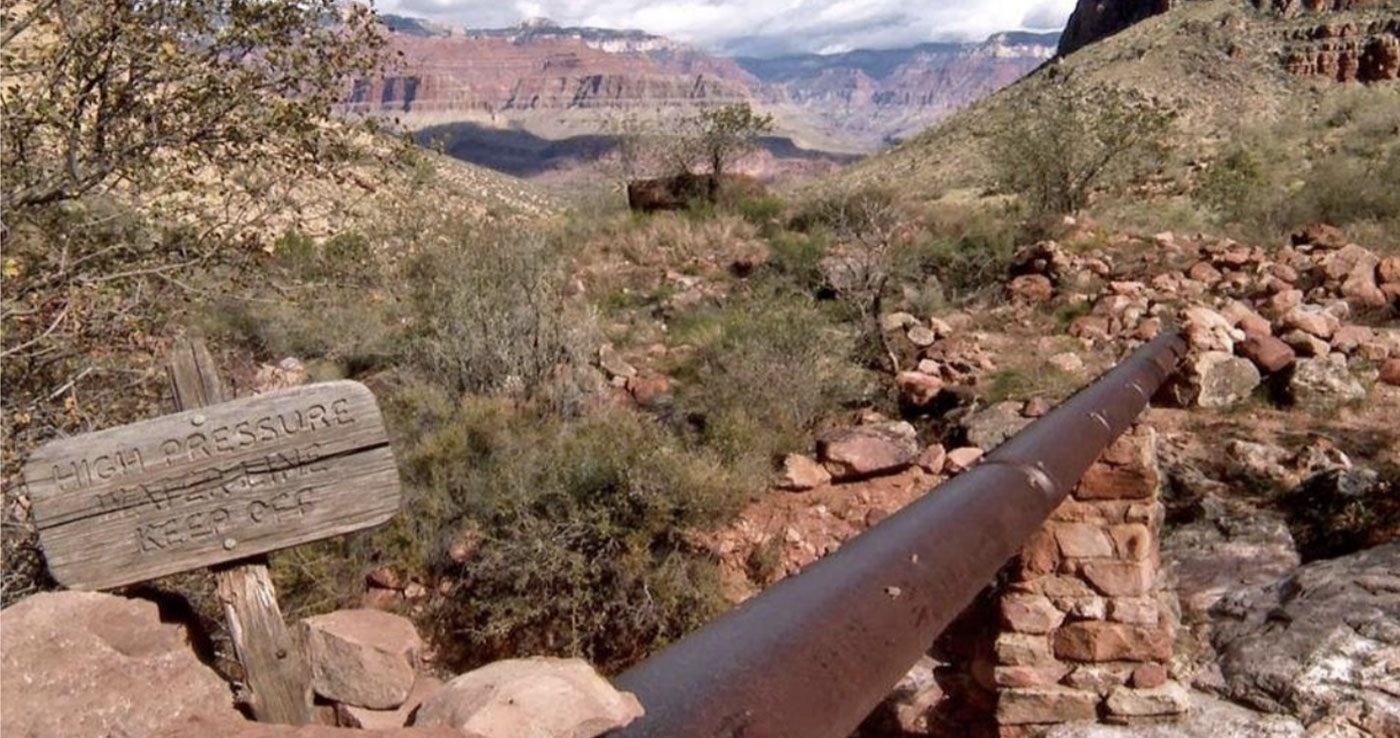Project Description
The Transcanyon Water Distribution Pipeline was built in and around the Grand Canyon from 1965-1970. The pipeline supports the Grand Canyon’s North Rim, South Rim, and Cross Canyon Corridor park operations. The utmost critical element of this support is the singular source of potable water to the South Rim and Cross Canyon Corridor. The Transcanyon Water Distribution Pipeline is now in its seventh decade, far beyond its 30-year life expectancy. The original pipeline’s efficiency and efficacy have deteriorated to the point of needing a total replacement. Until a replacement is completed, the current pipeline is subject to frequent failures and continual maintenance in difficult-to-access areas. According to the National Park Service, repair to the existing water line is extremely costly and typically interrupts water service for visitors and residents for 3-5 days.
In 2019, after an environmental assessment found no significant impact for the proposal, the National Park Service finalized a new water delivery system plan to provide safe, reliable water to Grand Canyon National Park’s South Rim and Cross Canyon Corridor areas. The new pipeline is expected to service the Grand Canyon National Park’s potable water needs for 50 years. This service includes potable water for 5,000,000 plus annual visitors, 3,000 permanent South Rim residents, and the 30 permanent residents of Phantom Ranch. In addition to potable water, the pipeline will supply fire suppression capabilities to protect the National Park’s more than 700 historic structures.
Project Scope
The Transcanyon Water Distribution Pipeline is a large project that is estimated to take five years to finish. Construction Cost Management (CCM) was engaged to evaluate replacement alternatives for the pipeline. To service this project, CCM provided estimating services for three packages. The first package is the construction staging area. It includes the construction of an access road, expansion to the existing helipad and a helibase support building, contractor laydown areas with trailer pad sites, and RV lodging pad sites.
CCM’s second package was for the construction of a brand new water treatment facility on the Grand Canyon’s South Rim.
The third package was for the distribution pipeline between Indian Garden and Phantom Ranch. In addition to water, the scope included replacing the existing electrical line with a 12.5 KV line to provide three-phase power to Phantom Ranch’s new water wells, treatment, and pumping facilities.
Project Challenges
The first and foremost challenge for replacing the Transcanyon Water Distribution Pipeline is the remote location and location access. Which, in this case, includes being able to access both sides of the Grand Canyon as well as the Canyon’s corridor interior. One of the significant hurdles for the project is verticality. The Water Distribution Pipeline starts at 3,500 feet below the Canyon’s North Rim, where it is moved 12.5 miles to the North Rim pump station. Water travels along a directional bore from the pump station to connect with the Grand Canyon’s South Rim. The significant elevation changes can create extraordinary pressure on the pipeline, with forces reaching over 1,200 psi.
All the water line structure is below the Grand Canyon’s rim through the wilderness. Depending on the specific location of construction, the equipment, materials, and labor needed must be floated in by barge on the Colorado River or airlifted by helicopter. The harsh wilderness environment is also subject to potential flash flooding.
CCM Approach
Project Designer HDR and CCM have a long history of cooperation going back more than 40 years. CCM has provided estimating services on Transcanyon Water Distribution Pipeline projects for over a decade. The current project design uniquely relies on helicopter airlifts to provide all material, labor, and equipment. Another unique feature of the project estimation was the provision of labor accommodations on the project worksite. Together, creating a wholly individual project for estimation, where site access costs are equal to construction costs. A project that is entirely within CCM’s wheelhouse thanks to our familiarity with the site, relationship with the designer, and more than four decades of experience. Being a small Women-Owned business CCM has been able to provide quick turnarounds when needed. The team of ten estimators makes it possible to achieve such tight deadlines.
Project Status
The new pipeline was featured as part of 2021 Engineers Week (February 21-27th). The National Park Service expects the new Transcanyon Water Distribution Pipeline design to be finalized in early 2022 and for construction to start later the same year. CCM’s team of estimators share a love for the outdoors and natural beauty. Being able to continue working on projects like this that support our National Parks is very special to us.




